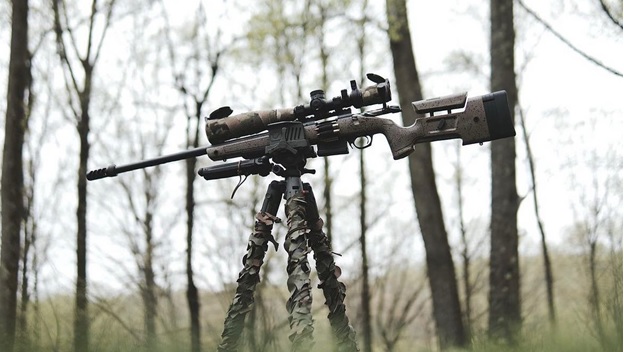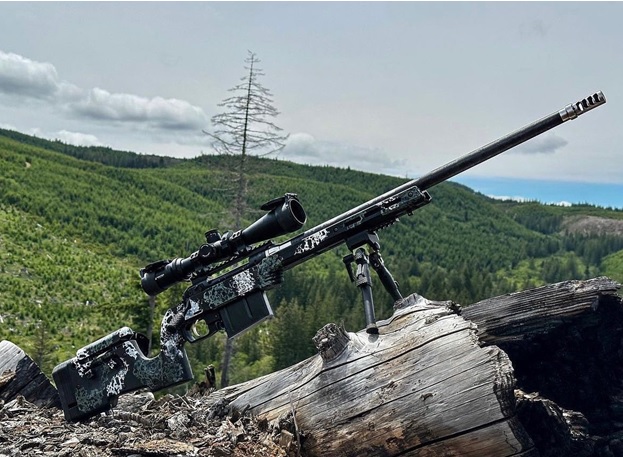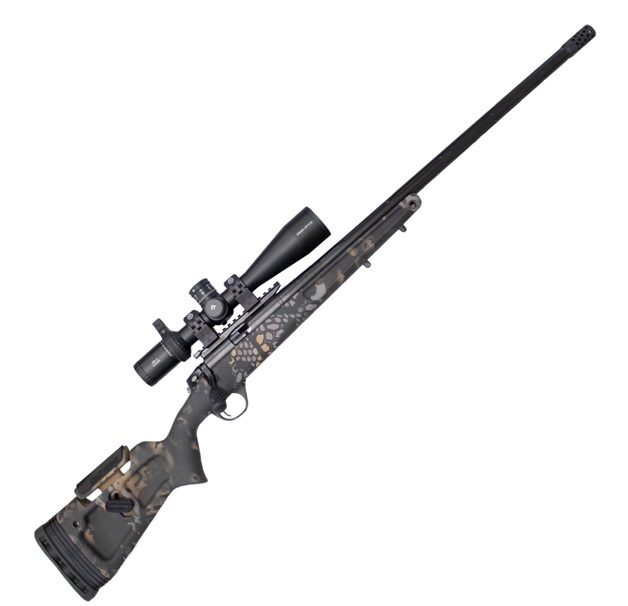
03 Oct Grayboe Stocks: Why Wood (Though Classic) Is Categorically Inferior
Made in America, by Americans, for Americans (and for shooters anywhere that appreciate precision engineering and next-generation functionality) Grayboe stocks are changing the game for stock upgrades.
All Grayboe stocks are made of a solid, homogeneous fiberglass epoxy matrix. It is lightweight yet impressively strong and offers unparalleled rigidity, minimizing unwanted flex and vibration.
Grayboe’s visionary use of this advanced synthetic matrix also brings to light a question that has divided the world of rifle shooters for at least the past 30 years – what benefits do synthetic stocks really offer shooters that wood stocks can’t match?
Let’s take a look at how Grayboe stocks are changing the game.
Wood vs. Synthetic: The Age-Old Debate
Ever since the first hand cannons were mated to barrels, stocks have been predominantly made of wood. Walnut, ash, and curly maple have long been choice woods, as many early American rifles can attest.
Wood adds a certain warmth to rifle stocks that no synthetic can match, nor will any synthetic ever be likely to rival.
It is strong, can easily be refinished and customized, and delivers classic, proven reliability.
But modern synthetics, like Grayboe’s solid fiberglass epoxy matrix (which is available with a wide range of modern finishes, by the way) are changing upending that dynamic.
Not in terms of aesthetics, per se, but in terms of performance. The following are the shortcomings of wood, broken down.
Wood Swells
For all the beauty and class of wooden stocks, there is one serious shortcoming of wood: it’s a natural material with endgrain and pores. This makes wood absorbent.
Now, there are things you can do to decrease the porosity and thereby the absorbency of most wood species. One is to work with a species that is not known for its absorbency – like walnut.
The other is to coat the wood with a finish that creates a barrier between the surface of the wood and elements, like polyurethane or lacquer. This will help prevent wood from absorbing atmospheric moisture.
These are things that gunsmiths already do – but they are only treatments, they don’t solve the problem. Try as they might, wood is a natural material and it remains absorbent even when sealed and finished.
This is hardly a concern with handguns and shotguns, but with rifles, it is a serious problem.
Rifles bed the barrel along the stock, and when the wood absorbs atmospheric moisture, it swells or warps. When the wood stock, which is not only in contact with, but supports the barrel, warps or changes its dimensions, your zero will be thrown off.
This is very problematic as it is not something you can detect by feel or sight alone. Your optics, mounted to the receiver and mated to the barrel, will all appear to be perfectly in order.
But, your point of aim will be thrown off whenever a wood stock absorbs (or sheds) a little atmospheric moisture) creating variances in your groupings that can be badly exaggerated at extended ranges.
The main problem is that this issue is variable and in accordance with the current climatic conditions. Shooting at long range with a rifle that’s paired with a wooden stock can cause you to experience a “wandering zero” that can’t be fixed except by replacing the stock.
This innate shortcoming of wood also produces pointed issues for outdoorsmen that are outside in the elements for multiple days at a time. Changing weather patterns that vacillate from extreme humidity to dry conditions within the span of a few days will make it very difficult to keep a rifle accurately sighted.
At close ranges, it’s not much of a concern, but at several hundred yards it is.
By their very nature, synthetic stocks, like Grayboe stocks, are inherently non-absorbent and will not warp or swell, even in extremely humid conditions or high or low temperatures.
For shooters, that means a rifle will hold zero, regardless of conditions.
While this does not impact the accuracy of the rifle itself, it can (and does) impact a shooter’s ability to connect with a target.
Wood Rots
Another thing about wood is the maintenance. Being a natural material, it requires a good deal of maintenance to keep it in shooting shape.
If the finish on a wood stock is compromised, and water is allowed to ingress, the stock will develop mold or mildew and will rot.
Even when a stock is meticulously maintained and kept properly dry, finished, and conditioned, it can experience a condition known as dry rot.
This can be a problem underneath the barrel and receiver where the stock is actually mated to the rifle’s action.
Needless to say, rot, whether wet or dry, will adversely impact the performance of a wood stock and cut short its lifespan.
Also, when exposed to the UV in sunlight, wood will discolor, becoming gray and brittle, and will break down over time.
Synthetic stocks, which are not made of natural materials, are impervious to wet rot and dry rot and require effectively no maintenance whatsoever.
Wood Cracks and Chips
One of the reasons that wood is used as a gunstock medium is because it is strong.
Wood is strong, that much is true, but it is not as strong as high performance synthetics like epoxy-resin fiberglass matrices.
It is also strong only when properly maintained. If not properly cared for, wood will crack, split, and chip.
Wood also exhibits weakness along the grain, which synthetic materials lack. This makes synthetics categorically stronger and more impact-resistant than wood.
It is also harder to mar the finish of most high-performance synthetic materials. They also do not crack or chip in the same manner as wood.
Mate Your Rifle to a New Grayboe Stock Today
Anarchy Outdoors carries a variety of Grayboe stocks, including the Eagle and Phoenix 2, both of which are compatible with CVA Paramount rifles as well as with Remington 700 actions and clones.
These rifle stocks are lightweight, extremely durable, will not swell, chip, or crack, and offer extensive adjustability and universal in-letting, simplifying the process of upgrading your rifle.
They deliver all of the advantages of other synthetic stocks mentioned here, and then some, making them among the most impactful rifle upgrades you can make.
For more information, investigate their specifications via the above links or get in touch with us at 833-980-0333.




No Comments